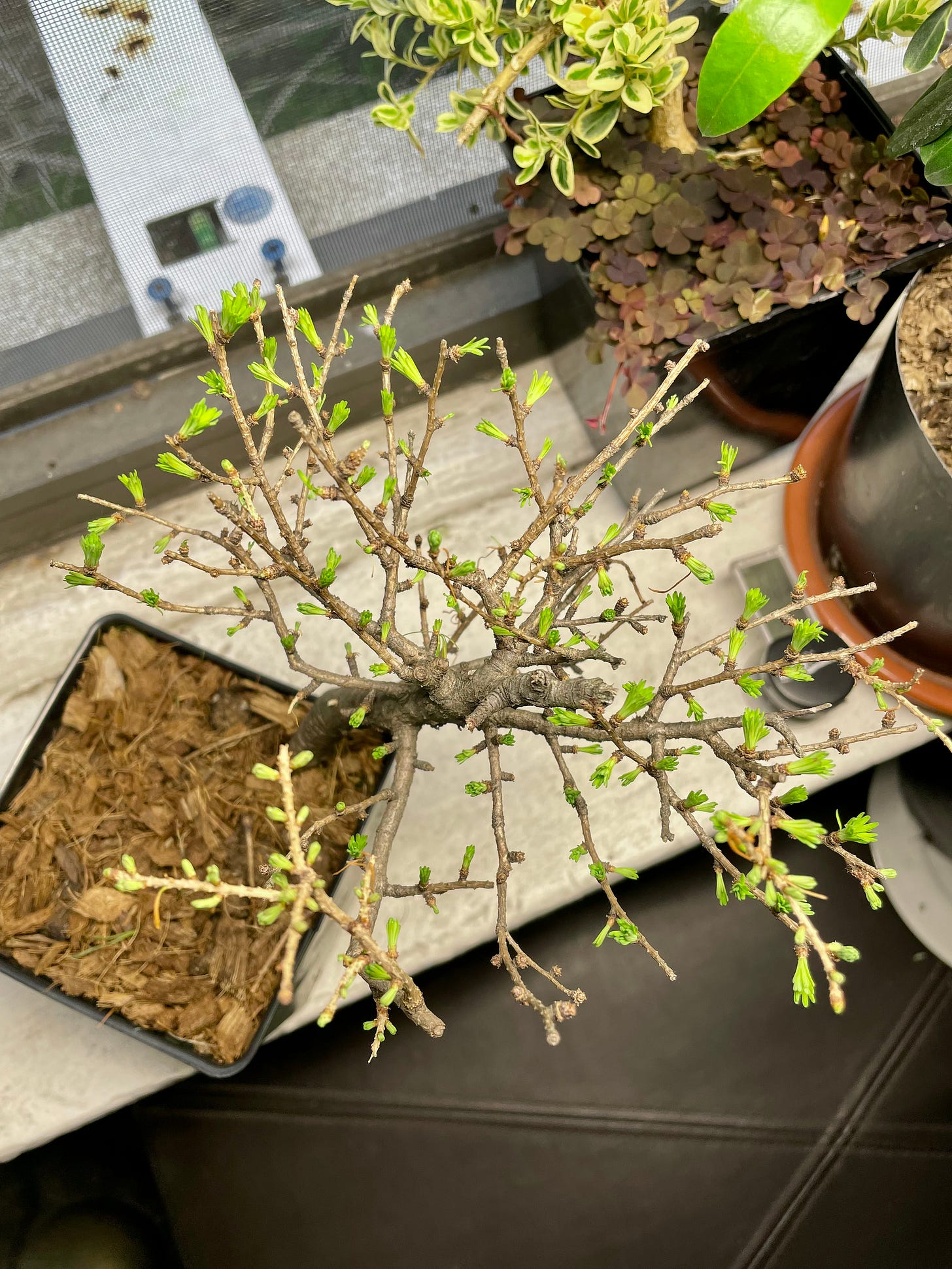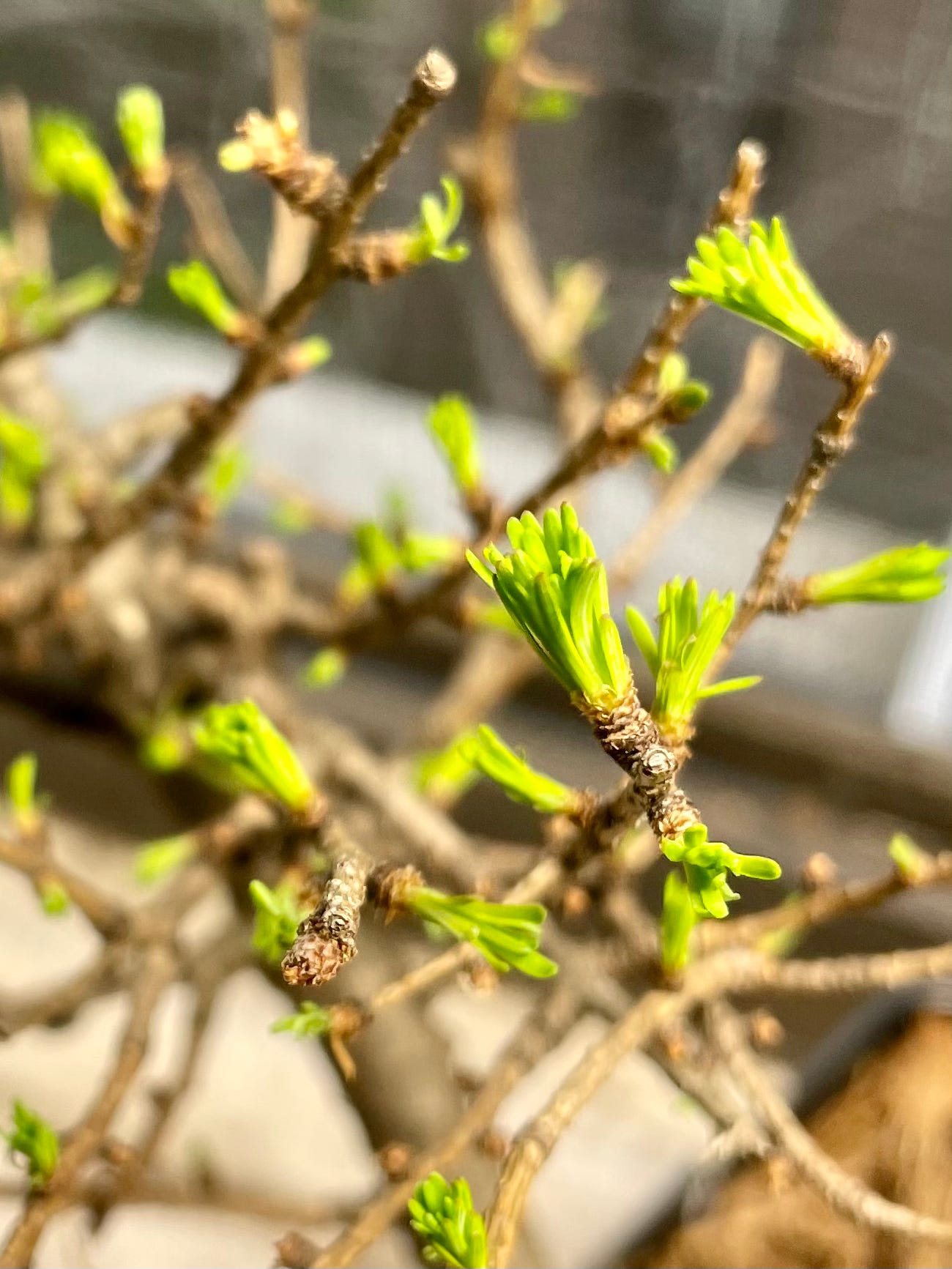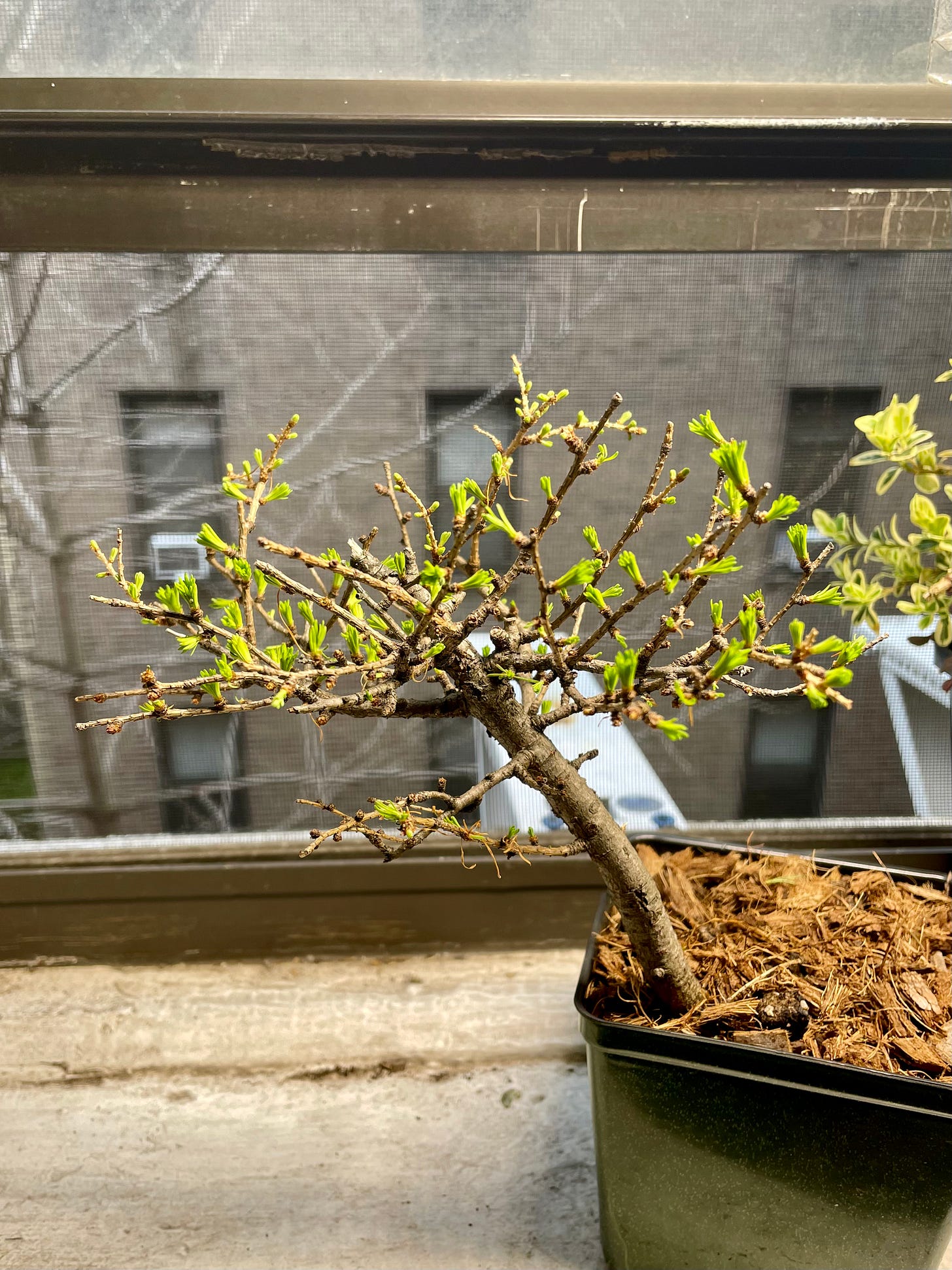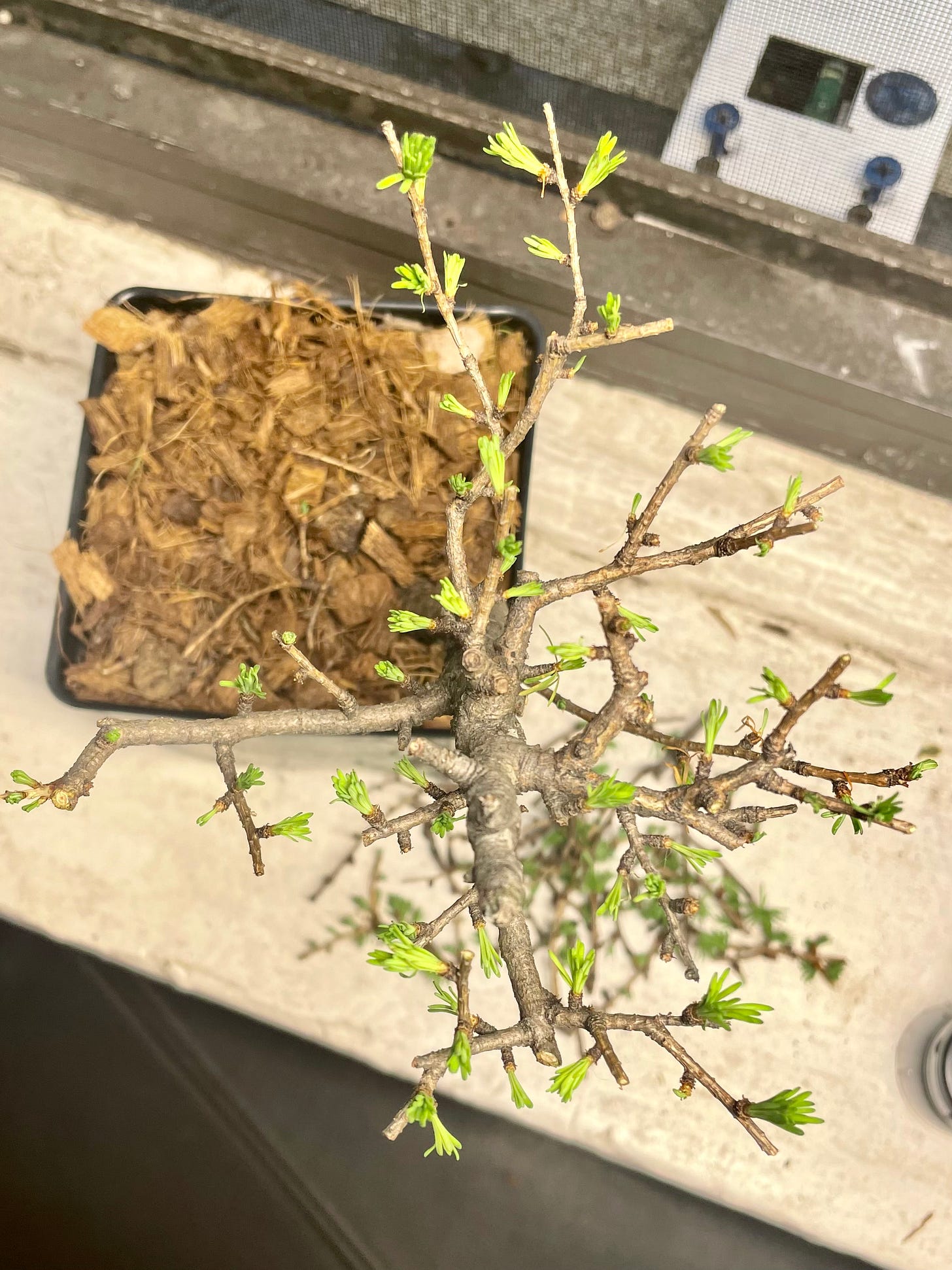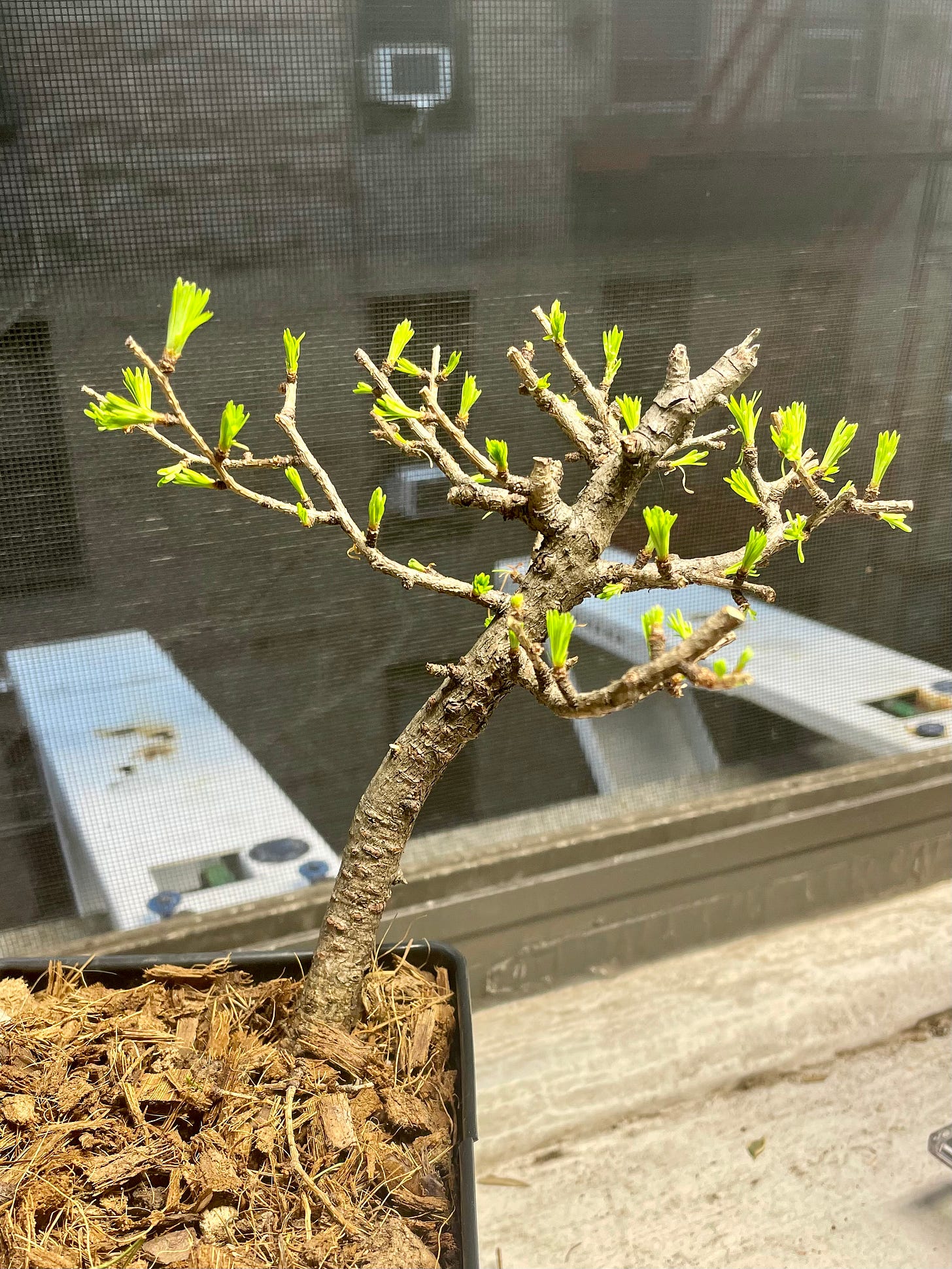The larch
Spring repots continue, but now it's time to prune.
My first larch died after failing to come out of dormancy, so I’ve been eyeing my new one in the hopes of happier results. Last week the first signs of green popped through the tree’s bulbous buds. I breathed a sigh of relief.
Larch needles emerge in this spray pattern of 10 to 20 tiny fronds, like a feather duster made from ferns. They don’t taste as refreshing as spruce tips, but they turn a pretty shade of tan in the autumn before dropping for winter. I’ve gotten to see this tree go from leaf to fall color to dormancy and back to green. That feels good.
I bought this larch from a private seller at a Facebook auction last year. Tamarack larches grow in bogs across the far northern US and Canada. People who live nearby—and who file the right paperwork—can find lots of funky little young trees like this one to collect. With a couple years of training you can get them into nice enough form for some yahoo in New York City to buy one from you for $48 plus $13 for shipping.
The tree came through winter well. Only a few branches died off, none of them major. New buds are popping all over.
I have no real plan for this tree yet. I like its current size, and from what I can see the roots are in good shape. However I’d like the trunk to thicken up, so for now I have the luxury of simply helping the tree through its routine while it gradually grows. One part of that routine is pruning before new growth sets in. This revitalizes the tree and helps it dedicate its energy to the lower and inner branches that would otherwise get shaded out.
Absent any particular goals for the tree, I trimmed according to the standard bonsai rules. Clear away dead branches. Now any that cross the trunk or other limbs. Reduce branch junctions to no more than two shoots. Trim growth at the apex back to two buds while letting lower branches grow out to thicken up.
You can get pretty far in your trimming just by following these conventions. The rules are rules for a reason.
Still, the tree needed more work and I had run out of rules. If I didn’t cut back the branches, they’d grow gangly and out of proportion by August. “Trim back to the outline of the tree,” Peter Chan of Heron’s Bonsai always says. I hear his voice as if it were Obi Wan Kenobi’s. Problem is I have no clue what the outline of this tree should be. I’m making it up as we speak.
Crazy thing is, as I kept at it, I found myself comfortable trusting my instincts, which apparently I’m starting to develop. Last summer, working on a spruce felt like a high-wire act. This larch was…comfortable. It’s been a brutal week of copywriting and deadlines. I was surprised how refreshed I felt after 30 minutes of working on this tree.
If I had full use of both arms I would have wired the remaining branches; the lower ones need to be bent downward to develop the outline that doesn’t exist yet. Still, I’m starting to see a tree here. A creature from the bog reaching out towards…something. Maybe next year I’ll have a clue as to what.
Tree reading
Really stretching the definition of “tree” reading, but that’s what the rubric’s called and I’m not changing it. Anyhoo, thanks to reader Nicholas for sharing this story about mushrooms, and how the electrical impulses they exchange might function like a language. [The Guardian]
Speaking of fungus, I have a new story out this week on tempeh, the miraculous cultured soybean cake from Indonesia and the only fungal food where which we eat its mycelium rather than its fruiting body! [Taste]

